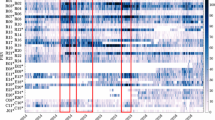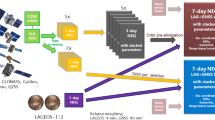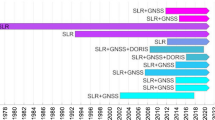Abstract
. Laser tracking to GPS satellites (PRN5 and 6) provides an opportunity to compare GPS and laser systems directly and to combine data of both in a single solution. A few examples of this are given in this study. The most important results of the analysis are that (1) daily SLR station coordinate solutions could be generated with a few cm accuracy; (2) coordinates of nine stations were determined in a 2.3-year-long arc solution; (3) the contribution of laser data on the `SLR-GPS' combined orbit, resulting from the simultaneous processing of SLR and GPS data, is significant and (4) laser-only orbits have an accuracy of 10–20 cm, 1-day predictions of SLR orbits differ from IGS orbits by about 20–40 cm, 2-day predictions by 50–60 cm.
Similar content being viewed by others
Author information
Authors and Affiliations
Additional information
Received: 1 October 1996 / Accepted: 14 February 1997
Rights and permissions
About this article
Cite this article
Zhu, S., Reigber, C. & Kang, Z. Apropos laser tracking to GPS satellites. Journal of Geodesy 71, 423–431 (1997). https://doi.org/10.1007/s001900050110
Issue Date:
DOI: https://doi.org/10.1007/s001900050110




